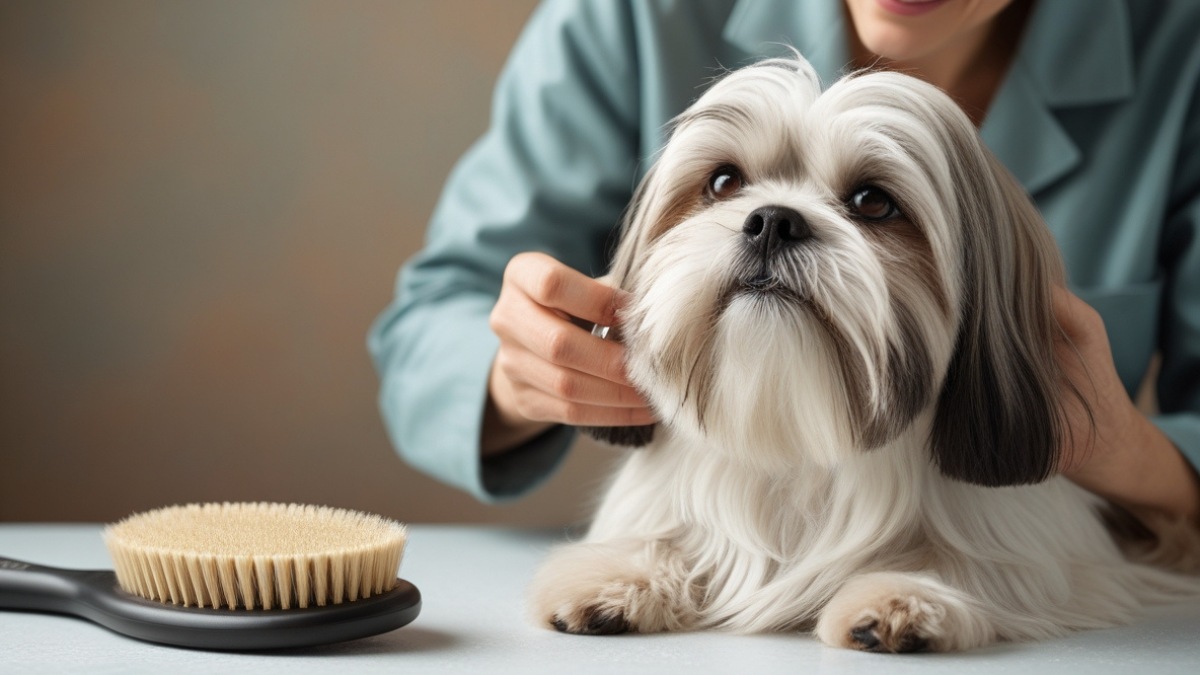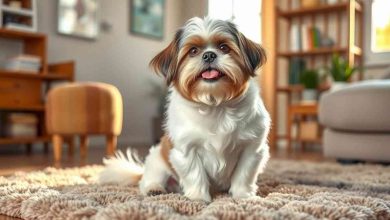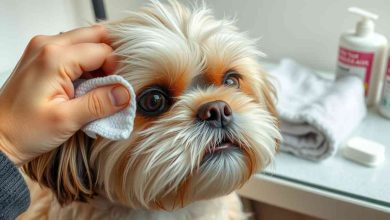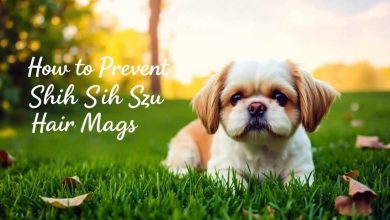How to Groom a Shih Tzu Face Without Stressing Your Dog

Grooming your Shih Tzu face is not just about appearance—it’s about their comfort, hygiene, and emotional wellbeing. With their long flowing coats and expressive eyes, Shih Tzus require regular grooming, especially around the face. However, many dog owners struggle with keeping their pups calm during these sessions. Thankfully, with the right approach, you can turn grooming time into a positive bonding experience rather than a stressful chore.
Understand Your Dog’s Behavior
Before you begin grooming, take a moment to observe your Shih Tzu’s behavior and energy levels. Each dog has a unique temperament. Some may tolerate grooming well, while others might resist even gentle touches near the face. Recognizing signs of discomfort—like pulled-back ears, squirming, or low growls—can help you gauge when to pause and provide comfort. It’s important to stay patient and never force grooming when your dog is anxious.
Create a Calm Environment
Set the tone by creating a peaceful space for grooming. Choose a quiet room away from distractions like doorbells or loud televisions. Dim lighting and gentle background music can go a long way. You may even use calming sprays or diffusers made for pets that contain natural ingredients like lavender or chamomile. Lay out a nonslip mat or a towel to keep your dog from sliding around, and have all your tools within arm’s reach to avoid fumbling during the process.
Use the Right Tools
Grooming a Shih Tzu face safely starts with the proper tools. Always use rounded-tip grooming scissors to avoid accidental pokes, especially around the eyes. A soft-bristle brush or slicker brush is ideal for detangling facial hair without pulling. For daily maintenance, pet-safe facial wipes help remove dirt and food particles. In case of tear stains—which are common in this breed—use a vet-approved tear stain remover. Electric trimmers with quiet motors can be useful, but should be introduced slowly.
Introduce Grooming Gradually
Rushing the grooming process can result in fear and resistance. Instead, desensitize your Shih Tzu gradually. Begin by touching their face gently during cuddle sessions. Touch the ears, chin, and around the eyes while offering soft praise or treats. Once your dog feels comfortable, let them sniff and inspect the grooming tools before you use them. This slow build-up can help reduce grooming-related anxiety over time.
Start With Facial Cleaning
Before any trimming, ensure your dog’s face is clean. Use a damp cloth or pet facial wipe to clean the area around the nose, eyes, and mouth. Be extra cautious near the eyes—wipe outward and never directly across the eye. This not only prepares the face for grooming but also prevents debris from dulling your tools or irritating the skin.
Detangle the Hair Gently
Once the face is clean, use a soft comb or brush to gently detangle the fur. Work slowly and carefully, starting from the ends and moving upward. This prevents tugging and pain. Detangling should be a daily task to prevent painful matting that can occur quickly on a Shih Tzu face. If you come across a knot, hold the base of the hair near the skin to avoid pulling.
Trim Around the Eyes with Precision
Hair growing into the eyes is not just uncomfortable—it can cause irritation or even infections. Using rounded-tip scissors, carefully trim hair that falls into your dog’s line of vision. Tilt your dog’s chin slightly upward and work with caution. Trim small sections at a time, always keeping your hand steady and ensuring the scissors point away from the eyes. Taking it slow ensures safety and builds trust.
Shape the Muzzle and Chin Hair
The area around the muzzle tends to trap food particles, so it needs frequent grooming. Use the scissors to trim the beard and mustache evenly, shaping them naturally along the face. Be sure not to cut too short—this can lead to skin exposure and irritation. Wipe away any debris after trimming to ensure cleanliness.
Tidy the Forehead and Bangs
Some owners prefer to let the hair on top of the head grow and tie it with a soft band, while others opt for trimming. If you choose to trim, carefully shape the hair above the eyes, ensuring it does not obstruct your dog’s vision. For a top knot, use latex-free hair bands and avoid tying too tightly, which can cause discomfort or hair loss.
Keep Your Dog Calm Throughout
If your dog begins to squirm or show signs of discomfort, pause the session. Offer verbal reassurance, gentle petting, or a small treat. Grooming should be a positive experience. Short sessions are often more effective than long ones, especially for young or nervous dogs. You can also use a lick mat with a smear of peanut butter to keep your dog occupied.
Avoid Common Mistakes
Many grooming problems arise from impatience or improper technique. Never rush the process or skip brushing to save time. Avoid using noisy tools too soon, and never force your dog into a grooming session when they’re clearly stressed. Consistency is key—regular, gentle grooming builds trust and cooperation over time.
Stick to a Routine
Regular grooming is less stressful than occasional, intensive sessions. Aim to brush and wipe your Shih Tzu face daily or every other day, and do light trims every 7–10 days. Not only does this keep them clean and healthy, but it also reduces grooming time and stress in the long run.
Tear Stain Management
Shih Tzus are prone to tear staining due to their eye shape and shallow eye sockets. Use a clean cotton pad soaked in warm water or tear-stain wipes to gently clean the affected area. If staining persists, consult your vet to rule out allergies or eye infections. Proper facial hygiene can drastically reduce discoloration and odors.
When to Seek Professional Help
Sometimes, home grooming isn’t enough—and that’s okay. If your Shih Tzu has severe matting, behavioral resistance, or you’re not confident with scissors, consider visiting a professional groomer experienced with toy breeds. They can offer tips, and demonstrations, and take care of challenging areas safely.
Shih Tzu Grooming Snapshot
- Breed: Shih Tzu
- Size: Toy breed
- Facial grooming frequency: 2–3 times/week
- Tools: Brush, blunt-tip scissors, wipes
- Tear stains: Common
- Ideal grooming start age: 8 weeks
- Avg. grooming session: 10–15 mins
- Shedding: Low, but hair tangles easily
- Common stress triggers: Noise, restraint, fast movement
- Best calming tools: Treats, music, gentle voice
- Grooming preference: Regular short sessions
Conclusion
Grooming your Shih Tzu face doesn’t have to be a battle. With patience, the right tools, and a calm demeanor, you can transform this routine into a soothing ritual that strengthens your bond. Prioritize comfort, go slowly, and always pay attention to your dog’s cues. Your Shih Tzu will look better, feel healthier, and trust you more with every gentle touch.
Make grooming time a moment of calm connection—your Shih Tzu will thank you with happy tail wags!




